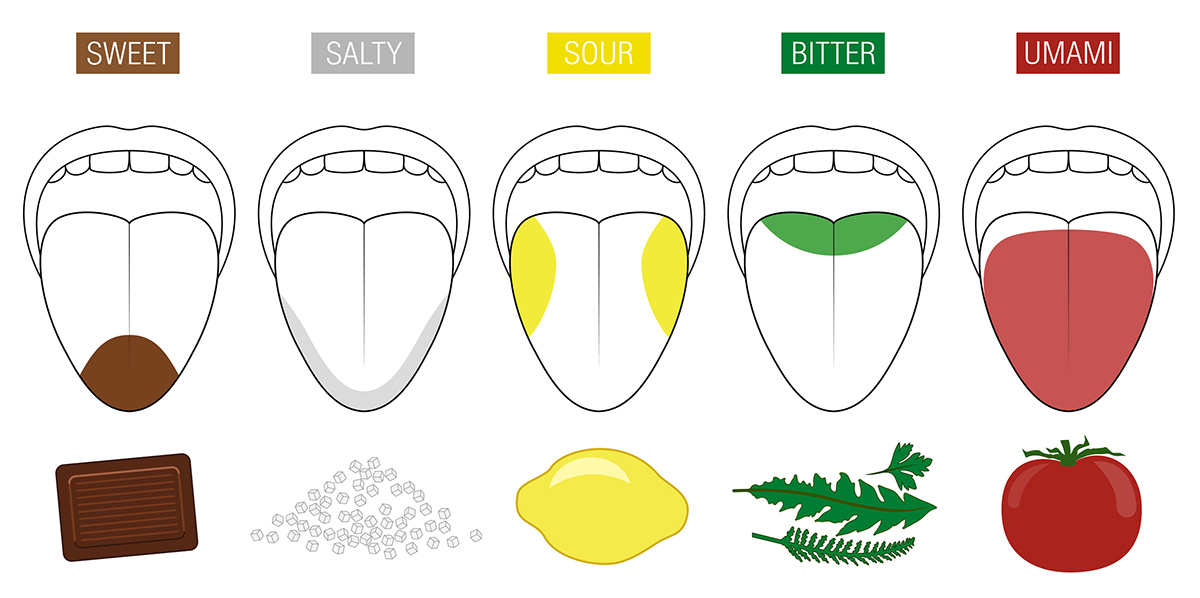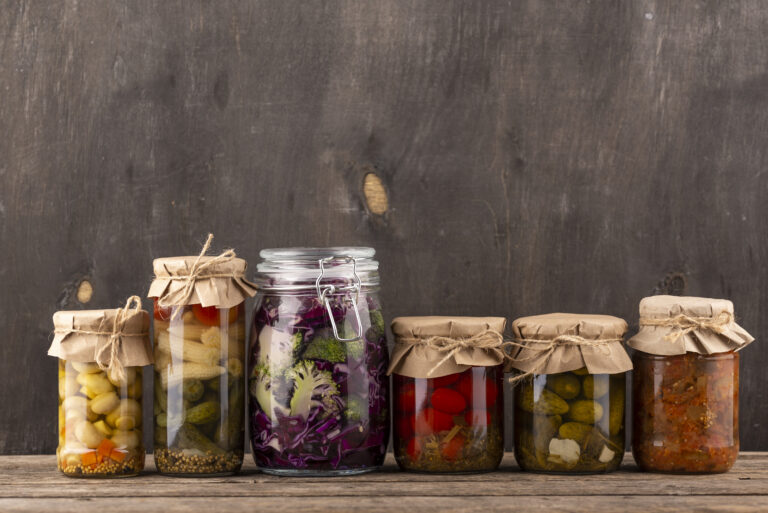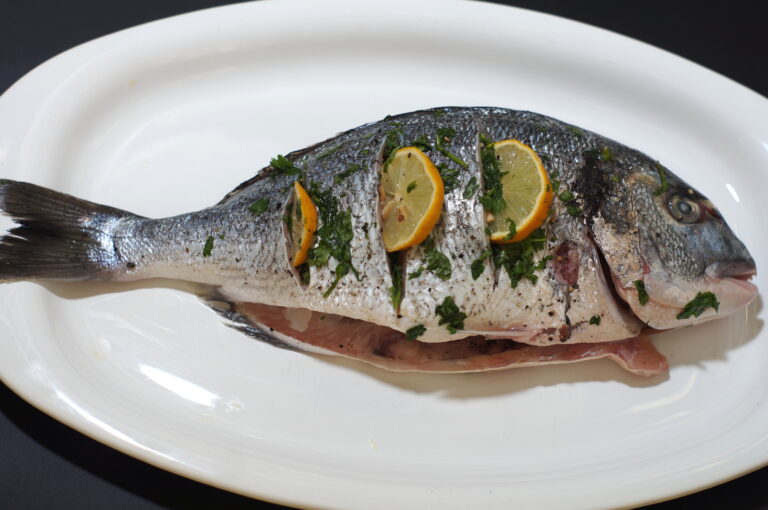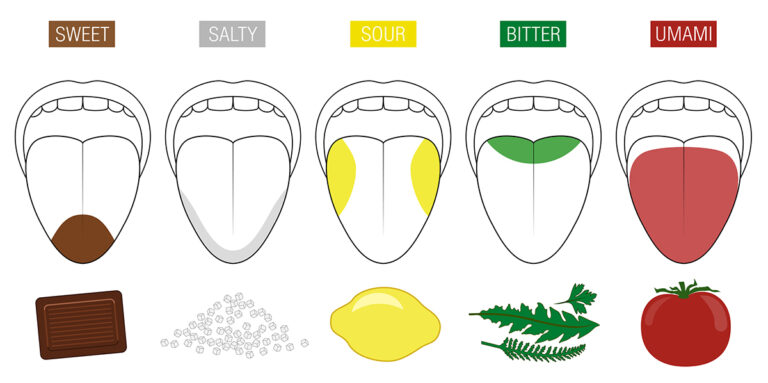
Tongue taste areas. Illustration with five sections of gustation - sweet, salty, sour, bitter and umami - represented by chocolate, salt, lemon, herbs and tomato.
Introduction: What Is Umami?
For centuries, food was thought to be defined by four basic tastes: sweet, sour, salty, and bitter. But in the early 20th century, a Japanese scientist named Kikunae Ikeda discovered a fifth taste that didn’t fit into any of these categories—umami. Often described as a savory, meaty, and deeply satisfying flavor, umami is now recognized as an essential taste in the culinary world.
This article explores the science, history, health benefits, and best sources of umami, along with tips on how to incorporate it into your cooking.
1. The Science Behind Umami: Why Does It Taste So Good?
🔬 How Our Tongues Detect Umami
Umami comes from glutamate, an amino acid naturally present in many foods. When glutamate binds to specific taste receptors on our tongues, it triggers a rich, savory sensation.
✅ Glutamate = Natural Flavor Enhancer
✅ Works with Other Tastes (Enhances saltiness, balances bitterness)
✅ Creates a Deep, Mouthwatering Flavor
Umami is also produced by ribonucleotides (such as inosinate and guanylate), found in meat, fish, mushrooms, and fermented foods. When glutamate and ribonucleotides are combined, they create a synergistic effect, making food taste even more delicious.
2. The History of Umami: From Ancient Japan to the Global Kitchen
Though Dr. Ikeda officially named “umami” in 1908, people had been enjoying its effects for centuries:
🗻 Ancient Japan: Samurai consumed miso soup and seaweed broths rich in umami.
🇨🇳 Ancient China: Fermented soy products and aged teas enhanced umami flavors.
🇮🇹 Ancient Rome: Garum, a fermented fish sauce, was a prized umami-rich condiment.
🇫🇷 17th Century France: Chefs unknowingly used umami-rich ingredients like mushrooms and aged cheese to add depth to dishes.
3. The Best Natural Sources of Umami
If you want to boost umami in your cooking, look for these flavor-packed ingredients:
🍖 Animal-Based Umami Sources
- Aged meats (prosciutto, dry-aged beef)
- Parmesan cheese (One of the highest natural sources of glutamate!)
- Anchovies & sardines (Essential in many Mediterranean dishes)
- Bone broth (Slow-cooked for maximum umami extraction)
- Egg yolks (Especially when cooked into rich sauces like carbonara)
🍄 Plant-Based Umami Sources
- Mushrooms (Shiitake, porcini, truffles)
- Tomatoes (Especially sun-dried or roasted)
- Fermented foods (Kimchi, miso, soy sauce)
- Seaweed (Kombu, nori, wakame—used in Japanese broths)
- Nutritional yeast (Popular among vegans for its cheesy umami flavor)
🔹 Pro Tip: Combining glutamate-rich foods (like tomatoes) with ribonucleotide-rich foods (like mushrooms) intensifies the umami effect!
4. How to Add Umami to Your Cooking
🍲 Boosting Umami in Soups & Stews
✔️ Add kombu or shiitake mushrooms to broth for extra depth.
✔️ Use roasted tomatoes or a splash of soy sauce for richness.
✔️ Simmer with Parmesan rinds to enhance the savory profile.
🍕 Umami-Rich Sauces & Condiments
✔️ Add anchovies or fish sauce to pasta sauces and dressings.
✔️ Mix miso paste into marinades and glazes.
✔️ Use fermented foods like kimchi for an umami punch.
🥩 Perfecting Umami in Meat Dishes
✔️ Dry-age beef or marinate it with soy sauce and Worcestershire.
✔️ Roast meats with umami-rich seasonings like garlic, mushrooms, and tomato paste.
✔️ Pair meats with umami-boosting sides like grilled onions and cheese.
5. The Health Benefits of Umami
Umami isn’t just about flavor—it also offers several health advantages:
✅ Reduces Salt Intake – Since umami enhances savory flavors, people naturally use less salt.
✅ Aids Digestion – Glutamate stimulates saliva production, improving digestion.
✅ Promotes Satiety – Umami-rich foods can make meals more satisfying, helping with portion control.
A study found that people who eat umami-rich foods feel fuller for longer, making it a great strategy for weight management.
6. Global Dishes That Highlight Umami
🌍 Want to taste umami at its finest? Try these iconic dishes:
🇯🇵 Ramen – Slow-simmered broth with miso, seaweed, and soy sauce.
🇮🇹 Pasta alla Puttanesca – Anchovies, tomatoes, olives, and capers create a deep umami taste.
🇨🇳 Mapo Tofu – Fermented black beans and mushrooms bring intense umami flavors.
🇲🇽 Mole Sauce – A rich blend of cocoa, chilies, nuts, and spices creates layers of umami.
🇰🇷 Kimchi Stew – Fermented cabbage, tofu, and aged meats make a bold umami-packed dish.
7. The Future of Umami in Modern Cooking
As chefs and food scientists explore new culinary frontiers, umami is becoming a key player in modern gastronomy:
👨🍳 Michelin-Starred Chefs are using umami techniques to enhance fine dining experiences.
🌱 Plant-Based Cuisine is embracing umami to create meaty flavors without actual meat.
💊 Food Tech & Supplements are isolating umami compounds for health and wellness products.
From fine dining to home kitchens, umami is transforming the way we cook and experience food.
Conclusion: Unlocking the Power of Umami in Your Kitchen
Umami is more than just a taste—it’s a key to better cooking, healthier eating, and more satisfying meals. Whether you’re making a simple soup, a gourmet dish, or exploring global cuisines, understanding umami will make you a better cook.



